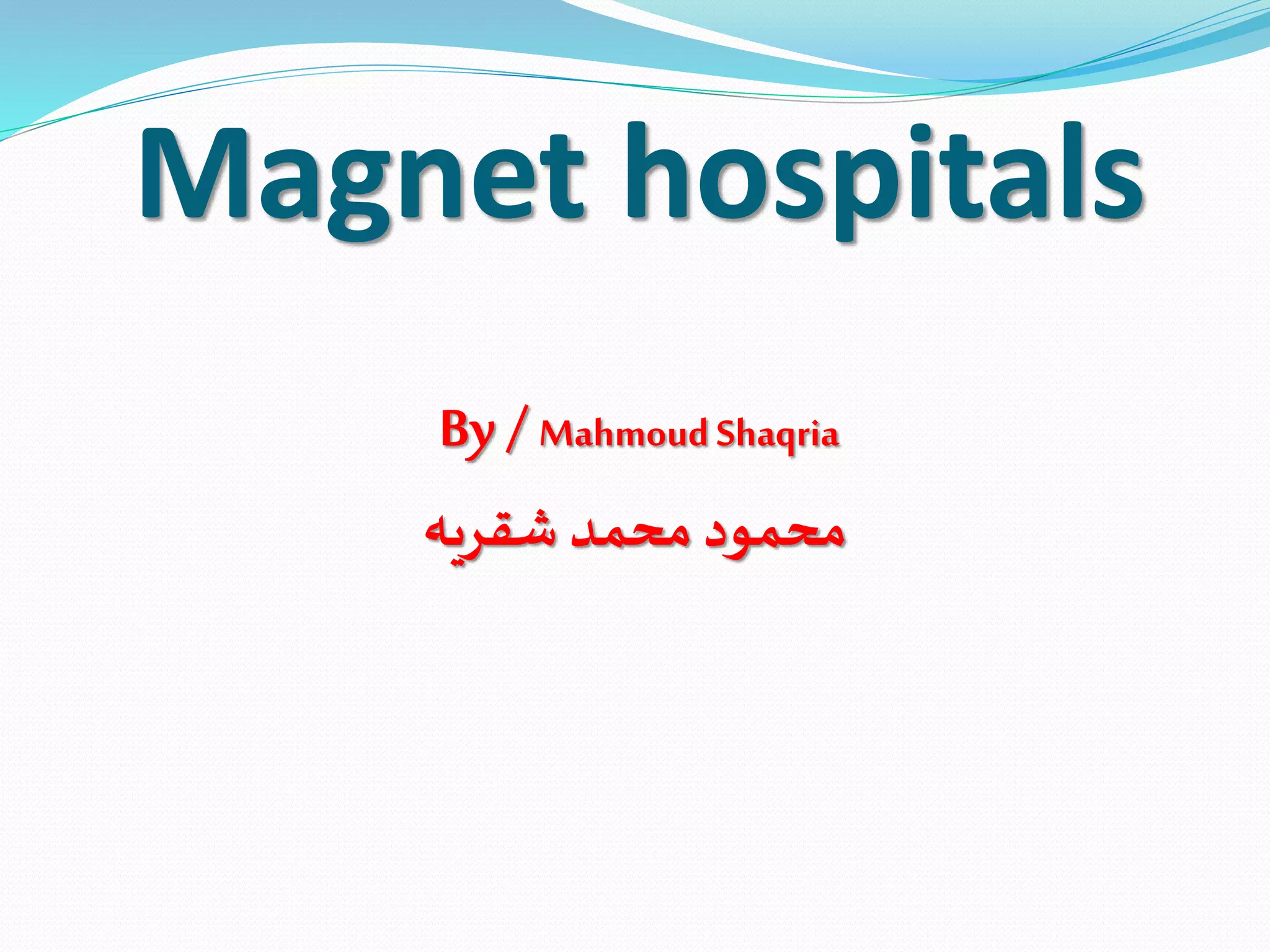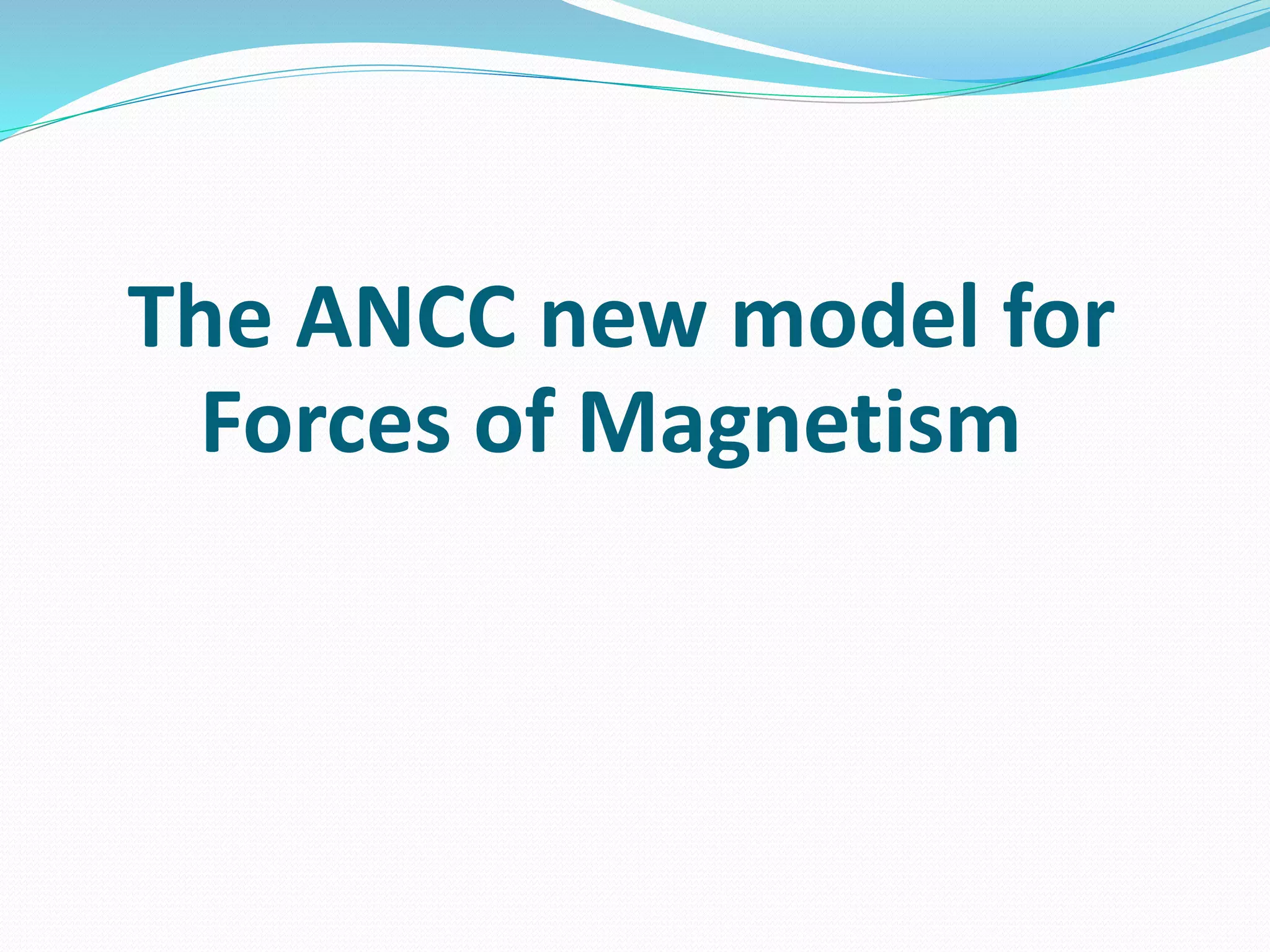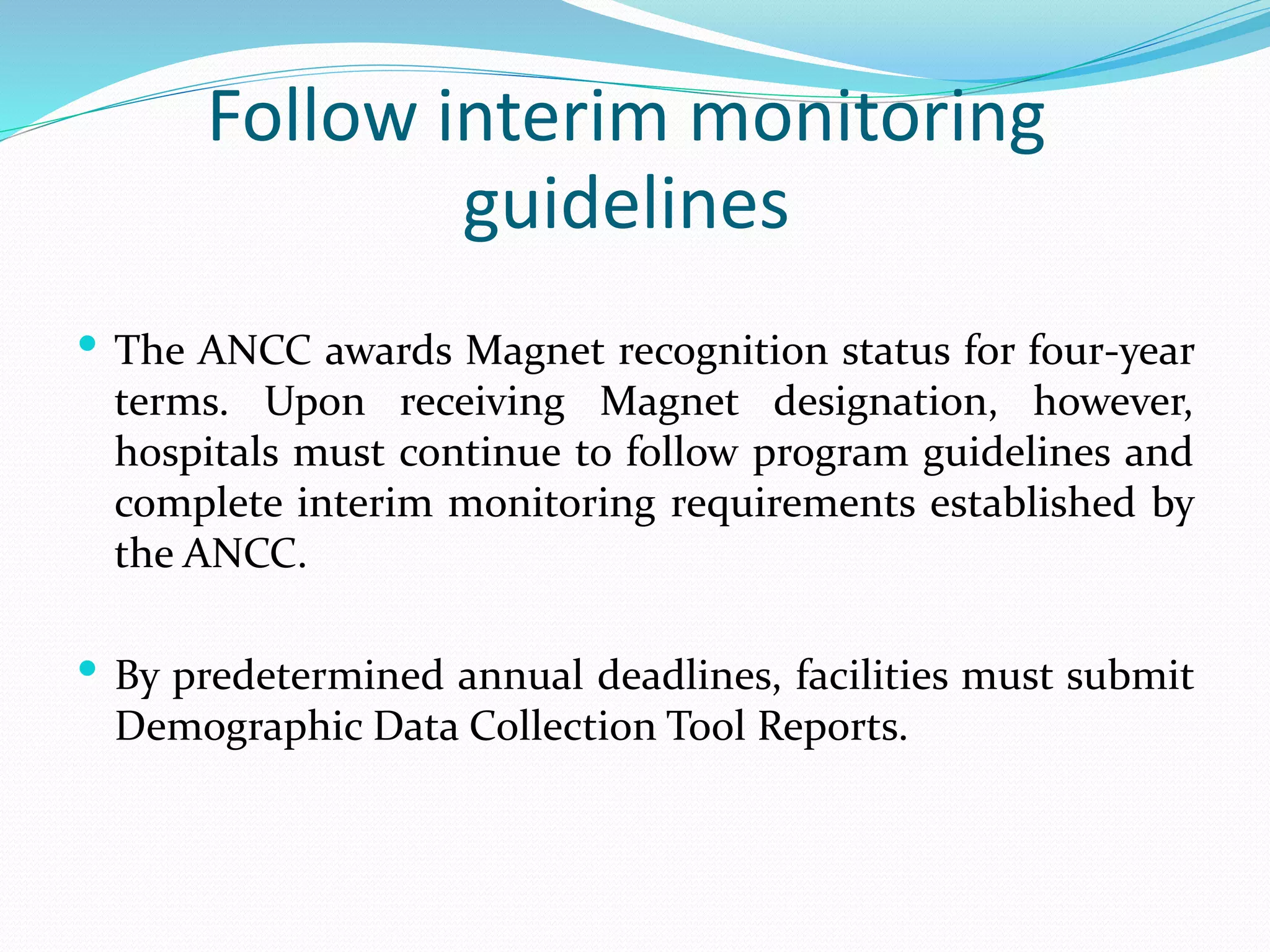Magnet hospitals are healthcare facilities recognized for nursing excellence. This document outlines the history and development of Magnet designation. It discusses the importance of Magnet status and the benefits it provides like lower nurse turnover, higher job satisfaction, and better patient outcomes. The document details the original 14 Forces of Magnetism and the ANCC's updated 5 forces model. It also reviews the prerequisites, application process, and requirements for maintaining Magnet recognition.




































































